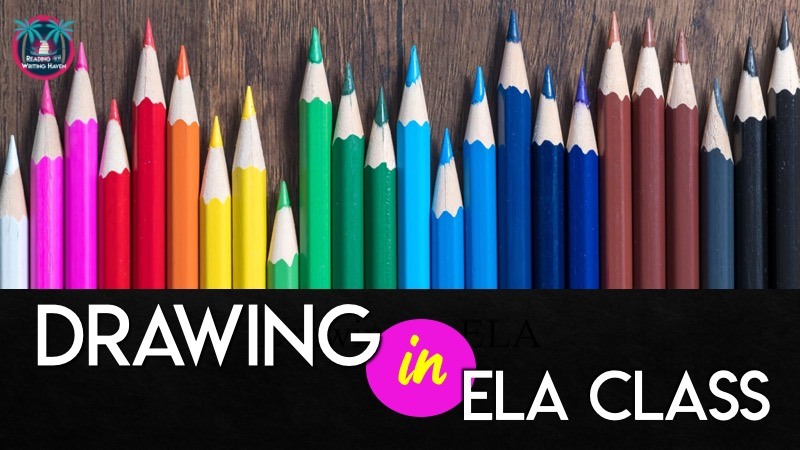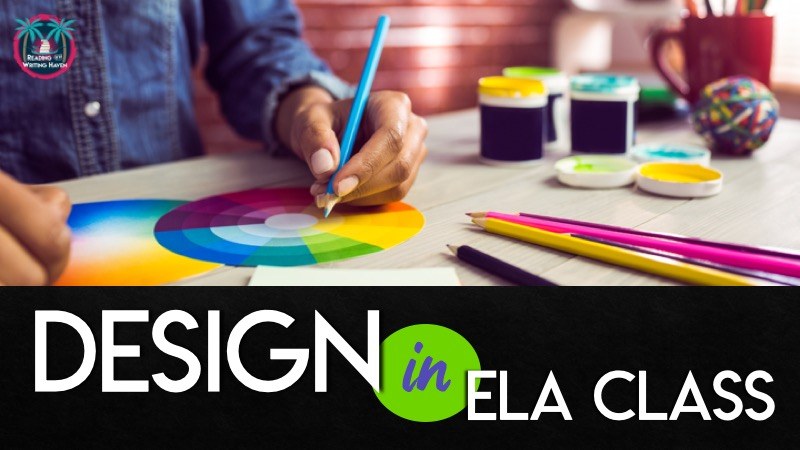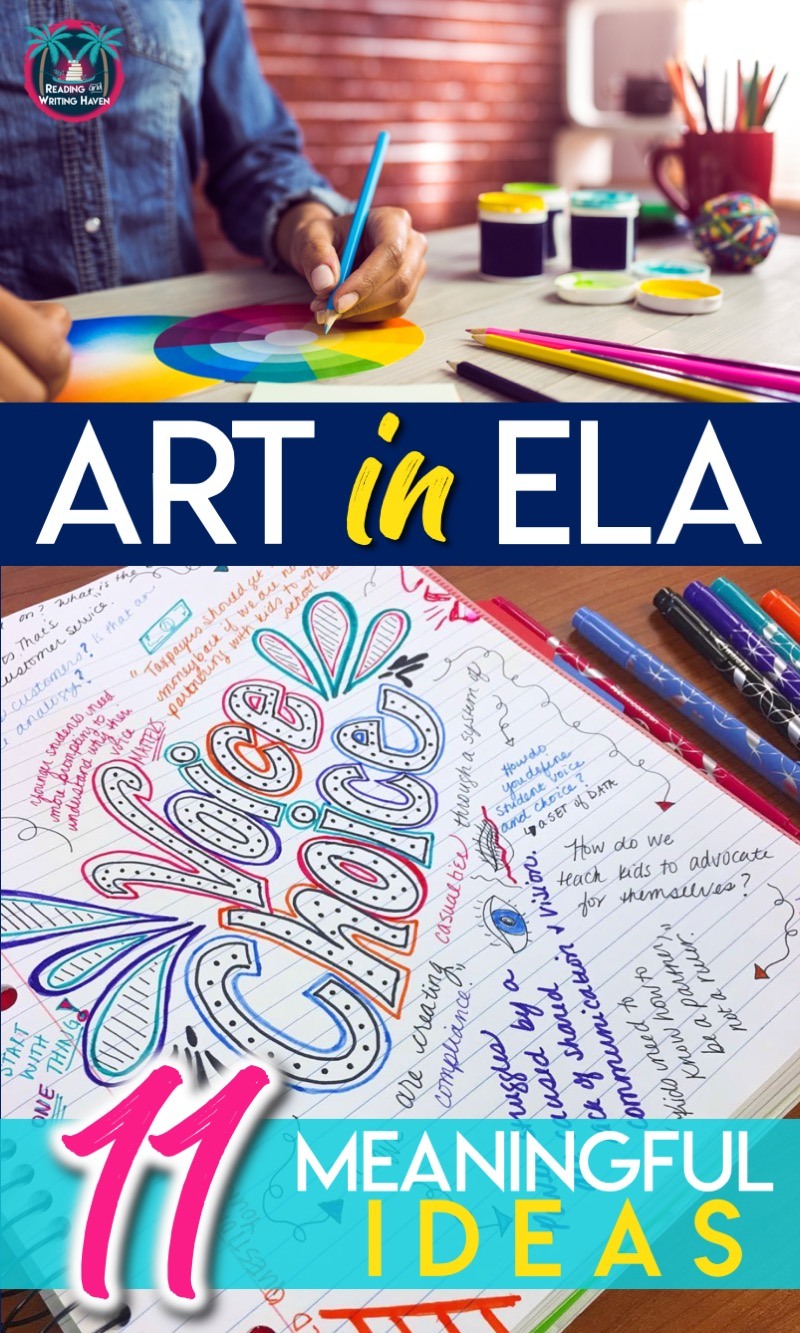Incorporating Art in ELA Class: Lesson Plan Ideas
It’s hard to find a student that doesn’t like some form of art. Incorporating art in ELA classes is beneficial for several reasons. For one, it gives students who like to be creative an outlet. Plus, pairing art with traditional texts encourages divergent thinking. And still, the arts help students to think critically, to build analogies and metaphors, and to synthesize their learning.
But. Incorporating art in the classroom doesn’t mean that we should expect students to be wonderful artists, nor should we grade them upon their artistic abilities. Consider this…
When I first began teaching, I had students complete parts of speech posters. Some of them added color, bedazzled them with scrapbooking supplies, and wrote in gorgeous lettering. However, when I really stepped back and analyzed what my students had learned from the assignment, I wasn’t impressed with myself in the slightest for assigning it.
And I thought…
Students spent quite a bit of time doing lower-level thinking by regurgitating notes in an isolated grammar experience that turned out to be – quite simply – arts and crafts.
I wasn’t proud of this realization, but when we know better, we can do better. The ideas I’m sharing in this post are ways I’ve found art to be a beneficial learning experience for students. I recommend always prefacing these assignments with two important notes for students:
- There is a difference between effort and art. While I wouldn’t grade students on either, I do expect to see their learning related to the standard we are studying. In some cases, I want to see detailed thinking.
- If students choose to spend extra time on their assignment because they love being artistic, I don’t discourage them, but I do encourage them to balance their time. After completing the assignment myself, I have a better idea of how long it should take them to complete.
So, let’s explore the activities and assignments then. Below, you’ll find eleven engaging ways to bring the arts into your ELA lessons through drawing, photographs, graphic design, and theater.
DRAWING
Students don’t have to be expert illustrators to ask them to draw. Drawing has the power to improve memory and deepen understanding through color and connections, which makes it ideal when trying to add art in ELA.
Sketch Notes
Recently, I’ve introduced students to sketchnotes. They are – in essence – notes! Sketchnotes are not supposed to be graded and it doesn’t matter whether or not they make sense to anyone other than the creator. The basic idea is that students are using words and phrases, sketches, and structure to synthesize what they are learning. The emphasis is not on the drawing, although it can be fun to give students a few minutes to play with a tool like Google Quick Draw to kickstart their imaginations. Instead, the emphasis is on showing students how to create meaningful mnemonics that deepen their learning.
One Pagers
One pagers are a refreshing break from writing essays, with the same focus on literary analysis. Simply choose the story elements you want students to analyze (in fiction or nonfiction), and let students convey their thinking on a single page. With one pagers, I’ve noticed students who tend to be perfectionists can spend way too much time on the assignment. Help them to reign in their need to stay up late creating a work of art by focusing the rubric on the content.
Associations
When we want students to learn and remember new terms, it helps to incorporate art in English class (or any class, for that matter). Ask students to draw examples, non-examples, and other associations with the terms. Here’s a free vocabulary resource that you can use with any Tier 2 word list. It brings in various aspects of art through learning styles and a brain-based approach.
PHOTOS
When we use photographs as art in ELA, we are providing students with tools to visualize more deeply. Plus, they are an easy and effective engagement strategy.
Poetry
It’s not too much of a stretch to incorporate art in ELA lesson plans when we are reading and analyzing poetry. Poetry is, in many ways, a work of art itself. Sometimes, when students don’t connect with poetry, it helps to show them images. For one, we can use photos as inspiration for writing. Students can write poetry focused on standards by using precise language, relevant descriptive details, and sensory language. Pictures can also provide the context students need to comprehend a complex text.
Vocabulary
Project photos when students are learning new words. For example, while reading “The Scarlet Ibis,” students may not understand what a palm frond is. Show them! Spark curiosity with vocabulary lists by projecting an image or sharing photographs on task cards, and ask students to justify which words on their list relate to that word. Tie it to standards by having them talk about how the connotation of a word is reflected in the photograph or ask them to use the word in a paragraph about that picture.
Reading Hook
To hook students at the beginning of a new text, use pictures! Project images. Or, make it interactive by creating QR codes that lead to images or by pasting them onto chart paper. Arrange the codes or the paper around the room, and have students explore them in a gallery walk format. With any of these approaches, students can generate questions, predictions, and connections about the text they will be reading.
GRAPHIC DESIGN
Visual communication is a growing part of the workplace. Weave art into ELA class by incorporating opportunities for students to learn a little bit about graphic design.
Author’s Craft
Students can write poetry inspired by nonfiction (or any other type of text). I like to incorporate this type of writing during a creative writing unit, multi-genre research project, or genius hour. Have them experiment with colors, fonts, and placement of their message. How does the connotation, voice, and overall impact of the piece change based upon the author’s craft?
Warm students up to this creative style of writing by analyzing mentor texts: children’s books! So many of the illustrators and designers in children’s literature play with white space, colors, fonts, and arrangement to entertain readers and convey information.
Booksnaps
If you’ve never tried booksnaps, here is an overview of a lesson I used when I introduced them to students. Booksnaps bring art into English class because students snap a photo of a part of the text that resonated with them or made them think. It’s a unique close-reading and reflection activity that enhances memory and encourages critical thinking.
Text Features
When we teach students to focus on text features, we are emphasizing graphic design. Essentially, we are asking them to identify the organization of a text and explain how that organization contributes to the overall meaning. Why did the author use this graph? What information does it add to our understanding? Why did the publisher pull out that quote? What is its significance? What is the purpose of the infographic at the end, and why should we not quickly gloss over it?
THEATER
Of course, there are so many other ways we can add art in English class, like through acting and films.
Writing
Most students enjoy movement and collaboration. So, have them create skits to re-write the ending of a play. I did this as a whole class activity with Romeo and Juliet, and my Title I students were completely enthralled, especially when they found out they were performing for other classes! They can participate in tableaux (frozen scenes) to analyze conflict, character, or theme in a text.
Literary Analysis
Use short films to introduce literary analysis. Level up by encouraging divergent thinking: Pair it with poetry or another genre and analyze!
Adding art in ELA class is a way to differentiate, add choice, encourage deeper, metaphorical thinking, and engage students. Not every student is an artist, and not all students enjoy lessons that incorporate these approaches. Everything, including art, is better in moderation. When possible, artistic elements could be offered as a choice.
Artistic ability should not be prioritized. Always, students’ thinking and skill as they relate to the standards, the learning targets, and the content are the most important. And, if students are spending too much time on the assignment because of the artsy requirements or if we are disappointed about the end result because it’s not as visually pleasing as we had hoped, it’s probably time to revisit the purpose of the activity.
If you’d like to read more about incorporating the arts in ELA, don’t miss this post from Language Arts Classroom.
READ NEXT:
- 13 WAYS TO USE MUSIC IN ELA
- TIPS FOR EFFECTIVE WORD WALLS IN SECONDARY
- 10 WAYS TO ADD CREATIVITY TO ELA LESSONS
- ENGAGING ELA LESSON PLANS
- 11 WAYS TO USE COLOR IN ENGLISH CLASS





